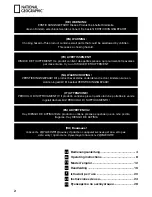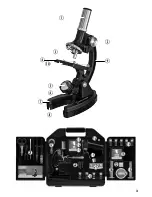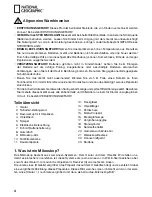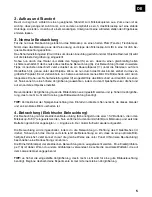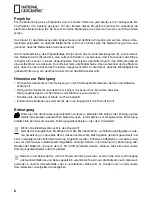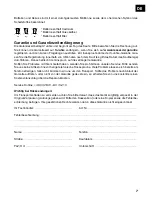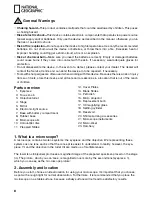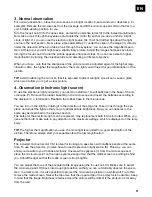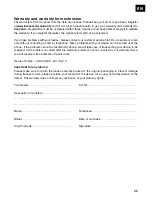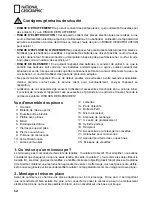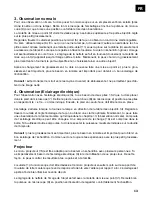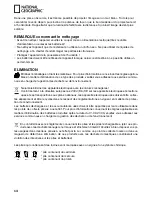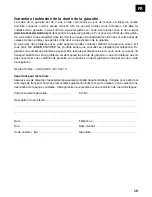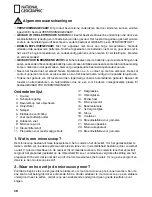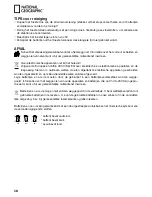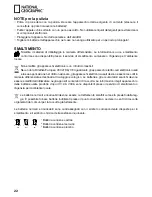
8
General Warnings
•
Choking hazard—
This product contains small parts that could be swallowed by children. This poses
a choking hazard.
•
Risk of electric shock—
This device contains electronic components that operate via a power source
(power supply and/or batteries). Only use the device as described in the manual, otherwise you run
the risk of an electric shock.
•
Risk of fi re/explosion—
Do not expose the device to high temperatures. Use only the recommended
batteries. Do not short-circuit the device or batteries, or throw them into a fi re. Excessive heat or
improper handling could trigger a short-circuit, a fi re or an explosion.
•
Risk of chemical burn—
Make sure you insert the batteries correctly. Empty or damaged batteries
could cause burns if they come into contact with the skin. If necessary, wear adequate gloves for
protection.
• Do not disassemble the device. In the event of a defect, please contact your dealer. The dealer will
contact the Service Centre and can send the device in to be repaired, if necessary.
• Tools with sharp edges are often used when working with this device. Because there is a risk of injury
from such tools, store this device and all tools and accessories in a location that is out of the reach
of children.
1. What is a microscope?
A microscope contains two lens systems: the eyepiece and the objective. We’re presenting these
systems as one lens each so that the concept is easier to understand. In reality, however, the eye-
piece (1) and the objective in the turret (3) are made up of multiple lenses.
The lower lens (objective) produces a magnified image of the prepared specimen placed on the stage
(4). The picture, which you can’t see, is magnified once more by the second lens (eyepiece, 1),
which you can see as the ‘microscope picture’.
2. Assembly and location
Before you start, choose an ideal location for using your microscope. It’s important that you choose
a spot with enough light for normal observation. Furthermore, it is recommended that you place the
microscope on a stable surface, because a shaky surface will not lead to satisfactory results.
Parts overview
1. Eyepiece
2. Focus knob
3. Objective turret
4. Stage
5. Mirror
6. Electronic light source
7. Base with battery compartment
8. Rubber base
9. Microscope arm
10. Colour-fi lter disc
11. Prepared Slides
12. Cover Plates
13. Blank Slides
14. Petri dish
15. Micro projector
16. Replacement bulb
17. 3X magnifying glass
18. Settling cylinder
19. Reservoir
20. Shrimp-farming accessories
21. Microscope instruments
22. Micro-slicer
23. Hatchery


